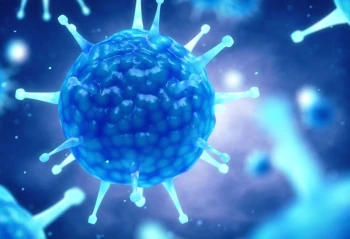The threat of rift valley fever
In the 1930s, a virus was discovered in the Great Rift Valley in Kenya. The virus can lead to rift valley fever. A potentially fatal disease for farm animals such as bovines and sheep. Given the high density of farm animals in the Netherlands, the introduction of rift valley fever virus would have major consequences for the agricultural sector.
How can rift valley virus reach the Netherlands?
Rift valley fever virus is transmitted by mosquitoes. Not just tropical and subtropical mosquito species, but also the European mosquito. Over the years, rift valley fever virus has emerged across Africa, and there are concerns that it will also spread to Europe at some point. The Dutch government anticipates this by funding vaccine development.

Rift valley fever
Among new-born lambs, the death rate is almost 100%. It declines with age to about 20% in adult sheep. Furthermore, the virus causes mass abortion among pregnant sheep.
Humans can also get infected, such as via the bite of an infected mosquito or after contact with the blood of infected animals. In humans, the virus can cause temporary or permanent blindness, internal bleeding and organ failure. About one in every hundred people die as a result of rift valley fever virus infection.
Vaccines
The most effective way of preventing an infectious disease is with a vaccine. There are various rift valley virus vaccines for farm animals, but they have downsides. Either they are only partly effective, or they are not safe to use. What's more, laboratory tests cannot differentiate between the vaccine and the virus. As a result, vaccinating livestock makes it impossible to detect an outbreak, which is why the Dutch government is funding the development of a better vaccine.
BPRC research
BPRC is also involved in this process. In order to test experimental rift valley virus vaccines, we have developed a rift valley virus infection model in marmosets. The experimental infection is similar to the bite of an infected mosquito. In the days after infection, we take little bits of blood to check for the presence of rift valley fever virus. At the end of the study, we examine the various organs for the presence of the virus.
Just like any other scientific experiment, an animal study requires proper controls. Since a virus consists of genetic material surrounded by a protein shell, it cannot exist on its own. While a virus is not a living being, it can die. In order to prevent drawing false conclusions from an animal study – based on dead virus instead of live virus, for example – so-called 'control animals' are included in each study. These animals are not vaccinated before they are exposed to the virus.
The efficacy of an experimental vaccine is determined by comparing the viral load in vaccinated animals and control animals. The results of these ‘proof of principle’ studies largely determine if a vaccine candidate will be further developed for human use, or not.
The 3Rs in Rift Valley fever virus research
Anyone who works with laboratory animals in Europe is required to explain why their research cannot be performed in any other way. Can it be done without using laboratory animals? Or can it be done using fewer animals? Which techniques are available to minimise the discomfort for the laboratory animals? In other words: have the 3Rs been implemented?
Replacement
A vaccine is designed to activate an immunological memory. To evaluate an experimental vaccine, a fully functional immune system is required. In the case of the rift valley fever virus, we currently do not know how this memory is generated and what mechanisms in the immune system are responsible. As such, there is currently no animal-free method to study the interaction between a rift valley fever virus vaccine and the immune system.
We can only test experimental medication for the rift valley fever virus using animals that are susceptible to the rift valley fever virus. We can see that the virus is able to reproduce in rhesus monkey blood, which is why we are using these animals in order to test experimental medication.
Reduction
Only the most promising vaccine candidates are evaluated in animals. Numerous animal-free techniques are used to prevent ineffective or less-effective vaccines from being tested in animals. Combining several vaccine candidates in one study also reduces the number of animals needed.
Refinement
The Netherlands National Committee for the protection of animals used for scientific purposes uses the following definition for the refinement of animal testing: the refinement of animal testing aims to reduce the discomfort of laboratory animals and/or to optimise laboratory animal welfare.
Good living conditions are a key part of our animal welfare policy. At BPRC, animals are always housed in social groups and never alone, and we have an extensive environmental enrichment programme. Furthermore, the animals are trained to reduce stress during experiments.
The rise of HIV and the unprecedented progress in biomedical science go hand in hand, both in terms of technology and animal welfare. As a result, much more data can be collected per animal and their discomfort is minimised.